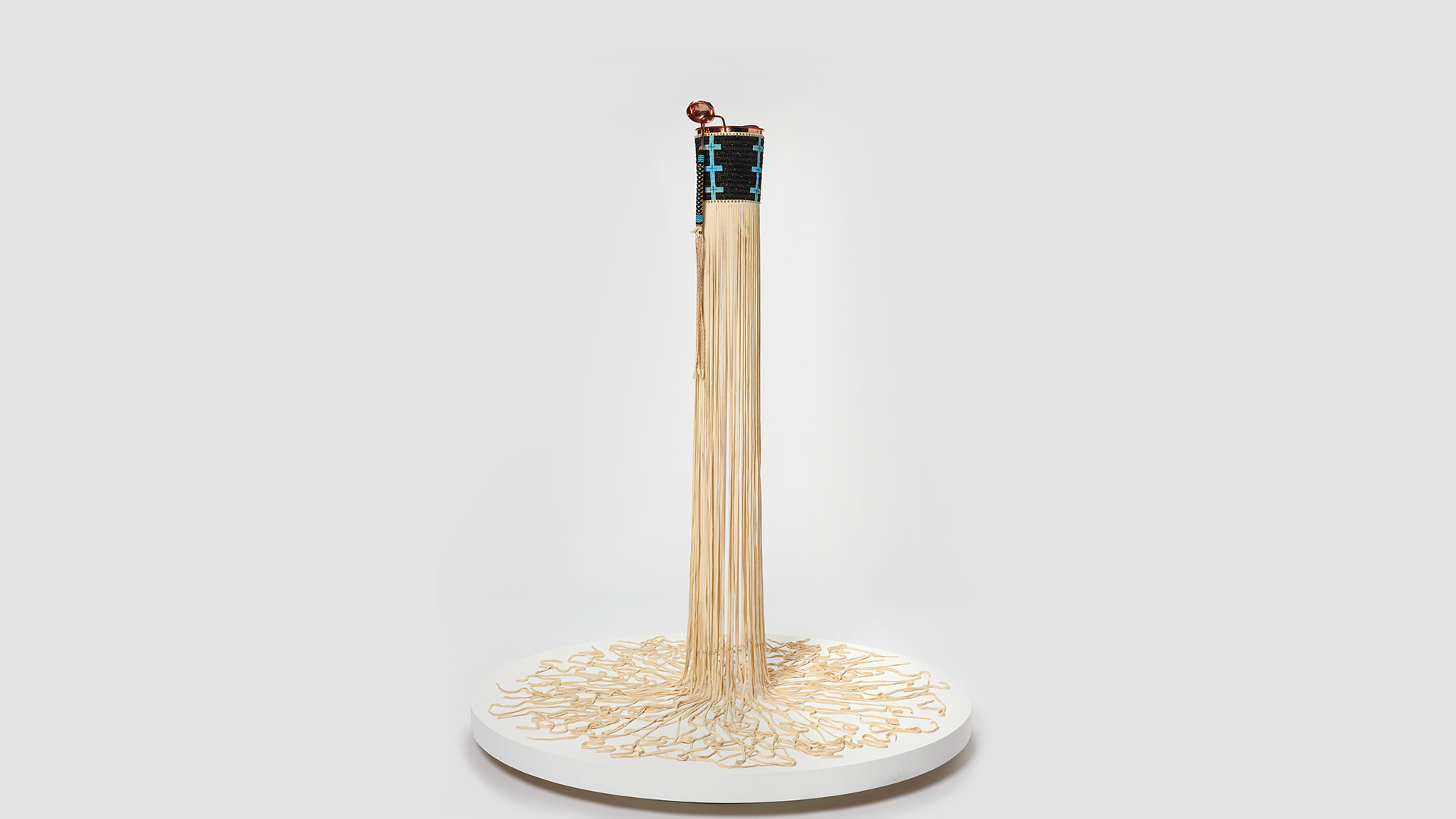Works by Dyani White Hawk and Julie Buffalohead are featured in a recent intiative by the Baltimore Museum of Art titled Preoccupied: Indigenizing the Museum.
The artwork, perspectives, and histories of Native artists, scholars, and community members are at the center of Preoccupied: Indigenizing the Museum, a major BMA initiative. The wide-reaching project seeks to begin addressing the historical erasure of Indigenous culture by arts institutions while creating new practices for museums.
The expansive Preoccupied project extends into the galleries and beyond with public programs, nine exhibitions, staff training, and new interpretive texts for artworks throughout the Museum. The curatorial team worked closely with Native artists, curators, and Baltimore-region residents on a community advisory panel to frame the questions this project would ask. In the earliest stages of the initiative, all Preoccupied project participants were invited to an “unconference,” a weekend-long retreat with the exhibitions’ curators, where they discussed Native visibility in the face of colonial oppression.
Dyani White Hawk’s work is on display in Dyani White Hawk: Bodies of Water. Dyani White Hawk presents one new and two existing sculptural works from her Carry series. Each Carry piece, composed of a large copper bucket and ladle adorned with glass beads, bears extravagantly long fringe whose draping emulates arboreal root structures. Alongside the artist’s works, White Hawk selected historic Lakota belongings from the BMA’s collection. Through these works, White Hawk insists upon an interdependence between art and function—and by extension art and life—effectively calling into question art history’s tendency to devalue craft. These works operate as physical metaphors for the carrying of history, cosmology, generational teaching, and deep thought.
Julie Buffalohead’s work is on diplay in Illustrating Agency. This installation highlights the ways in which Native artists have increasingly asserted agency—the exertion of one’s own power—over representations of their communities and identities over time. In the early 20th century, white arts educators encouraged Native artists to create “authentic” art—as defined by settlers—that embraced traditional subject matter while often neglecting present realities. In the decades that followed, generations of artists have shrugged off settler expectations by depicting their community on their own terms. Such work illustrates the modern Native experience, problematizes harmful stereotypes, and pointedly challenges outsider understandings of Indigenous identity.
Learn more about the larger initiative and exhibitions and installations on display here!



